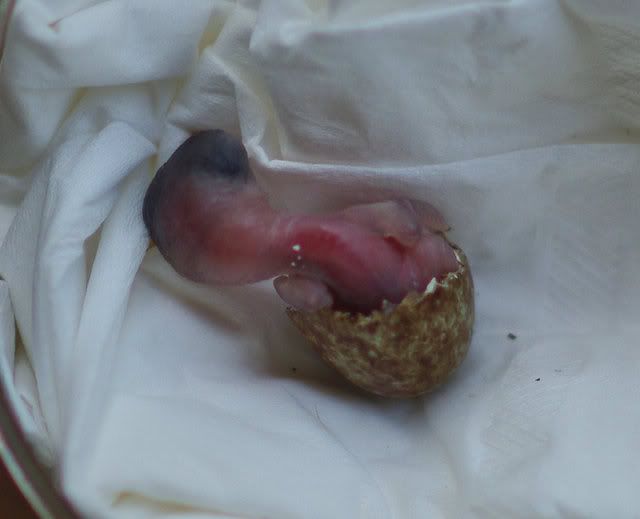In olden days, to check if an egg is fertile or developing properly, a hen’s egg would be held close to a candle flame so that its light shone through the egg. By shading the upper part of the egg it could be seen if the egg is fertile and the extent of the embryo’s development. Candles are no longer used to check egg fertility. Nowadays, we use electric torches especially designed for the purpose but we still refer to the process as candling.
The exterior shell of a shama egg is mottled and darker than a hen’s egg. Quite a strong light is therefore required to be able to “look” into it and it would not be possible to do so with a candle. I use an Egg-lume from Brinsea. When held against an egg, its high intensity beam of light can be directed into the egg to light the inside and enable the egg’s development to be checked.
From 1 to 3-4 days after the female commences to brood, it cannot be seen if the egg is developing. In other words, shining a light through the egg will show no difference between a 3 days old egg and a one newly laid. From about the 4th day, the beginnings of veins barely can be seen in the broader part of the egg. These appear as thin red lines meandering over the inside shell. Also, by the 4th day, it can be seen that an air sac is starting to form at the top of the broad part of the egg. This sac will continue to grow in size and by the time the chick is ready to hatch it will cover about 25% to 30% of the egg. The chick will use the air in the sac to take its first breath of air when it starts to hatch.
By the 5th or 6th day, veins can be seen over much of the broad part of the egg. Be patient, gently hold the Egg-lume or other light source against the shell and you will see what looks like a pulsating heart within the egg expanding and contracting about once every second.
My shama eggs usually hatch when the female has sat for 10 to 11 days. Towards the end of the period, the chick will be “sitting” in the narrow part of the egg. The chick will appear as a dark mass in the lower 75% of the egg. The veins that were earlier so clearly visible have all retreated into the mass that is the chick and they can no longer be seen.
At this time the egg must be handled very gently. The egg itself does not contain any calcium and all the calcium that is required for the developing embryo is drawn from the egg-shell. Because of this, soft-shell eggs have insufficient calcium for the growing embryo which therefore has no chance for proper development. For the same reason, the shell has become very thin by the time the chick is about to hatch and even very light pressure may dent the shell.
When the chick is fully developed and ready to emerge from the shell, it will use its beak to pierce through the membrane separating it from the air in the sac. It will breathe the air from this source. With its egg-tooth, it then chips at the shell to create a tiny hole to in further air for it to breathe. This hole will be along the membrane of the air sac. The chick then slowly rotates its entire body around the shell, all the time gradually chipping away much like a can-opener until it has chipped through almost the entire circumference of the egg, then with several heaves it throws open the top part of the shell and emerges as shown below:

No comments:
Post a Comment